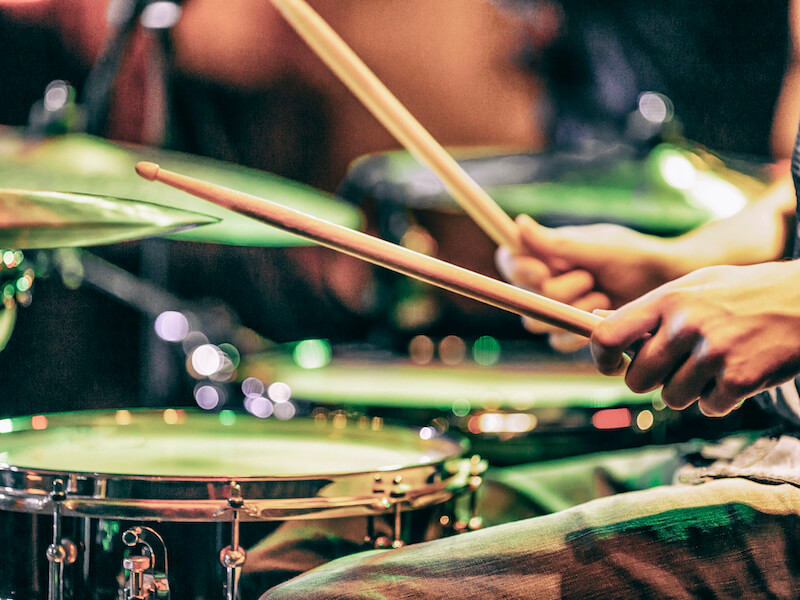
Musicians rock. Their shows bring us so much happiness. The drawback is that music is pretty much always loud, in fact, many individuals prefer it that way. The musicians themselves are at an even greater danger of hearing damage since they are exposed to loud music nearly every day.
As you get older, you’ll still want to be able to enjoy your favorite music whether you’re a musician or not. For musicians, protecting their hearing is the key to a long and successful career. For the rest of us, hearing protection is the key to a lifetime of musical enjoyment and enrichment.
Oftentimes it can be surprising how loud music can be
If you ask most people whether a jet engine is loud, they’ll likely say yes.
Is music actually that loud? If you ask somebody whether an acoustic guitar or a lone violin is noisy, they might not answer so quickly. Imagine their surprise when they discover the reality: that music is indeed loud! Your ears can even be harmed by classical music which can get to fairly high volumes.
A violin, for example, can create sounds well over 90 dB. That’s about as loud as a leaf blower. To put that into context, the European Union laws dictate that any workplace noisier than 85 dB calls for the use of hearing protection.
And if you’re working with music on a daily basis, continuous exposure to that sort of volume, particularly without hearing protection, can seriously damage your hearing over time.
Can you safeguard your ears from noise damage?
Okay, musicians who want to preserve their hearing for years to come need to safeguard their hearing. So how can musicians keep enjoying their music while also safeguarding their hearing?
Well, here are a couple of simple things musicians can do:
- Take breaks: Your ears are like any other part of your body: they can become exhausted and will frequently benefit from rest. So give yourself “hearing breaks” frequently. By doing this, noises won’t overpower and damage your ears. Duration is nearly as important as volume when it comes to hearing health. Taking breaks can be the difference between just the right amount of stimulation and too much!
- Track your volume: Knowledge is power, right? So it makes sense that you should always know what levels of sound you’re subjecting your ears to. Tracking the volume on amps and PA systems is part of it. But you can also purchase a volume meter app for your smartphone to make it easy to track the real-world volume levels your ears are experiencing day in and day out. You will want to make a few changes if the meter regularly reads above 85 dB.
Ear protection is important
Needless to say, the single most effective thing you can do to protect your ears is simple: using hearing protection of some kind. A lot of musicians are worried that ear protection will mute the sound and impact its overall sound quality. That’s not always the case, depending on which kind of ear protection you use.
- Ear plugs made primarily for musicians: Disposable earplugs are something that’s most likely very familiar to most people. They’re fairly good at stopping a lot of sound although they sometimes don’t fit very well. They aren’t difficult to get, aren’t expensive, and can be disposed of easily. And they aren’t best suited for musicians. But earplugs made just for musicians are also available at a slightly higher cost. These earplugs use modern manufacturing methods (mostly they’re made out of very specific materials and are designed to conform nicely to the ear) to preserve audio fidelity while diminishing the noise you experience by something like 20dB. For musicians who need a moderate amount of protection on a budget, this option is perfect.
- Electronic earplugs: Electronic earplugs work in basically the same way as high-quality, non-electronic earplugs. The earplug itself will block most of the sound. What you hear will instead be piped in by the earplug itself. For individuals who work in really loud environments and need better control of the volume, these earplugs are perfect.
- In-ear monitors: The majority of music is electronic nowadays, or at least amplified by electronics. An in-ear monitor takes those electronic signals and conveys them directly to a device placed in your ear (called an in-ear monitor). The majority of monitors are little speakers that fit snugly and block out the majority of sound while playing sounds you want to hear at safe volumes. So you control the volume level and can hear sound accurately and clearly. For musicians who electronically amplify their instruments these in-ear-monitors are the ideal answer.
Protect your career by protecting your hearing
It’s best to begin safeguarding your hearing early, before any significant damage occurs. With options available at just about every price point, there are simple ways for everybody to protect their hearing and their future. Remember that you’re investing in your career by using hearing protection for musicians. By doing so, you will be able to enjoy making music for as long as you want to.
Contact us so we can help you get started.

